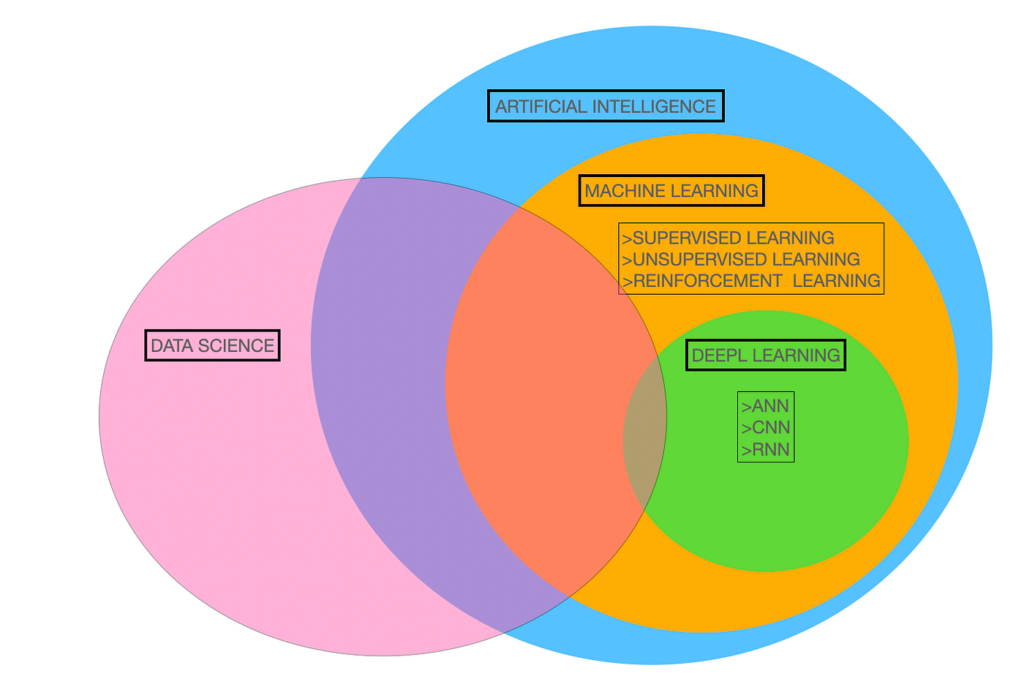In the ever-evolving landscape of artificial intelligence, one technology has captured the imagination of researchers, developers, and innovators alike: Generative AI. At the intersection of machine learning and creativity, Generative AI is transforming the way we approach content creation, data analysis, and even art. In this article, we delve deep into the world of Generative AI, exploring its techniques, applications, and the remarkable impact it’s having across various industries.

Understanding Generative AI
Before we dive into the applications, let’s get a clear understanding of Generative AI. In essence, Generative AI refers to a class of algorithms that are designed to generate new content. Unlike traditional AI systems that rely on pre-programmed rules, Generative AI leverages vast datasets to produce content that can range from text to images and even music. It’s a technology that simulates human creativity, making it a game-changer in numerous fields.

- Recurrent Neural Networks (RNNs) : RNNs are a fundamental building block of Generative AI. They excel in processing sequential data, which makes them indispensable in tasks like natural language processing and text generation. RNNs have the unique ability to capture context over time, making them invaluable for generating coherent text, whether it’s in the form of chatbot conversations, automated content creation, or even poetry generation. Their recurrent nature allows them to maintain memory of previous inputs, enabling them to produce contextually relevant outputs.
Application: Chatbots and Virtual Assistants- Chatbots powered by RNNs are evolving into conversational agents capable of engaging in natural, context-aware conversations. They can answer queries, provide personalized recommendations, and even mimic human-like conversational patterns. This application is particularly valuable in customer support, where RNN-based chatbots handle routine inquiries, freeing up human agents to focus on more complex and nuanced customer issues.
- Variational Autoencoders (VAEs) : VAEs represent the forefront of probabilistic modeling within Generative AI. They allow for the creation of new data points by mapping input data into a latent space. VAEs are widely utilized in image generation, anomaly detection, and recommendation systems. By learning the underlying distribution of data, VAEs can generate novel samples that resemble the input data distribution, making them essential for tasks where generating new, realistic data is required.
Application: Anomaly Detection in Manufacturing- In manufacturing, VAEs play a crucial role in enhancing product quality. They analyze sensor data from production lines and identify deviations from the norm, flagging anomalies in real-time. This proactive approach helps prevent defects, reduces downtime, and ultimately improves product quality and reliability.
- In manufacturing, VAEs play a crucial role in enhancing product quality. They analyze sensor data from production lines and identify deviations from the norm, flagging anomalies in real-time. This proactive approach helps prevent defects, reduces downtime, and ultimately improves product quality and reliability.
- Generative Adversarial Networks (GANs) : GANs are known for their innovative approach, consisting of two neural networks – a generator and a discriminator – engaged in a constant battle to produce and evaluate content. GANs are particularly renowned for their ability to create highly realistic images and have applications in art generation, image enhancement, and deepfake technology.
Application: Enhanced Image Editing- Photographers, graphic designers, and content creators leverage GANs for advanced image editing. These networks can automatically remove unwanted objects from photos, upscale low-resolution images, and apply artistic filters to transform ordinary photos into visually stunning artworks. This application enables professionals to achieve impressive results with minimal effort.
Applications Across Industries
Generative AI’s versatility has led to its adoption across a spectrum of industries, revolutionizing processes and decision-making in numerous ways:
- Healthcare : In healthcare, Generative AI is improving medical image analysis by automating the interpretation of X-rays, MRIs, and CT scans. It also generates synthetic patient data for research, accelerating drug discovery, and enhancing diagnosis accuracy.
Application: Medical Image Analysis- Generative AI assists radiologists by quickly identifying abnormalities and assisting in early disease detection, ultimately improving patient outcomes.
- Generative AI assists radiologists by quickly identifying abnormalities and assisting in early disease detection, ultimately improving patient outcomes.
- Content Generation: Content creators are employing Generative AI to automate the production of articles, product descriptions, and marketing materials. This not only saves time but also ensures a consistent tone and style across content.
Application: Automated Content Marketing- Businesses are utilizing Generative AI to create marketing content at scale. From blog posts to social media updates, AI-generated content helps maintain a consistent online presence and effectively engages audiences with relevant and timely information.
- Businesses are utilizing Generative AI to create marketing content at scale. From blog posts to social media updates, AI-generated content helps maintain a consistent online presence and effectively engages audiences with relevant and timely information.
- Art and Design: Generative AI has opened new horizons in the world of art and design. Artists use AI algorithms to create stunning visual artworks, while designers employ it for innovative product design and prototyping.
Application: AI-Generated Art Exhibitions- Art galleries worldwide are showcasing AI-generated artworks. These pieces challenge traditional notions of creativity and invite viewers to contemplate the role of technology in art, fostering intriguing discussions about the fusion of art and technology.
- Art galleries worldwide are showcasing AI-generated artworks. These pieces challenge traditional notions of creativity and invite viewers to contemplate the role of technology in art, fostering intriguing discussions about the fusion of art and technology.
- Finance: Generative AI is crucial in the finance sector for risk assessment, fraud detection, and algorithmic trading. It processes vast datasets to identify patterns and anomalies in real-time, enabling financial institutions to make informed decisions and mitigate risks effectively.
Application: Algorithmic Trading- High-frequency trading firms leverage Generative AI to develop trading algorithms that respond to market changes within milliseconds. This technology has revolutionized the financial industry by improving trading efficiency, minimizing latency, and enhancing trading accuracy.
- High-frequency trading firms leverage Generative AI to develop trading algorithms that respond to market changes within milliseconds. This technology has revolutionized the financial industry by improving trading efficiency, minimizing latency, and enhancing trading accuracy.
- Gaming: The gaming industry harnesses Generative AI to create realistic environments, characters, and dialogues. This technology adds an unprecedented level of immersion and interactivity to video games.
Application: Procedural Content Generation- Generative AI is used to create vast, open-world environments in games. It ensures that no two playthroughs are the same, enhancing replayability and player engagement by generating diverse and unpredictable game scenarios.
The Future of Generative AI
As we look ahead, the future of Generative AI appears exceptionally promising. With ongoing research and development, we can expect even more sophisticated applications in fields like education, entertainment, and customer service. Moreover, as computing power continues to grow, Generative AI will become more accessible to businesses of all sizes, democratizing its potential.
In conclusion, Generative AI is a transformative force that’s reshaping industries and revolutionizing how we interact with technology. Its techniques, ranging from RNNs to GANs, offer a rich toolkit for innovators and creators. The applications span from healthcare to entertainment, promising a future where AI augments human capabilities across the board.





